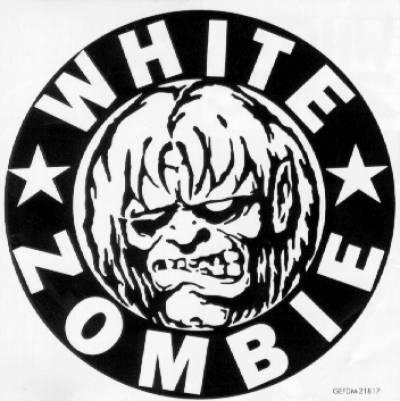For metalheads who thought bands like W.A.S.P. and Motley Crue just weren\'t menacing or heavy enough, White Zombie was the perfect antidote for a period of time during the mid-late 90s, as they fused B-horror movies visuals and subject matter with
heavy music and growled vocals. And while White Zombie was originally thought to be a full-fledged band,\' it would later become known that the group was almost entirely the vision of their larger-than-life singer, Rob Zombie. Hence, the White Zombie story begins with good ol\' Rob (who was then known as Rob Cummings), shortly after he relocated from his hometown of Haverhill, MA, to New York City, during the early 80s. Although he had long admired such theatrical metallists as Kiss and Alice Cooper (as well as such punk outfits as the Ramones), Rob wasn\'t quick to form a group in the Big Apple, as he worked as a production assistant on the TV show Pee Wee\'s Playhouse and did art design for magazines. By 1985 however, Rob opted to pursue a career in music, as he united with then-girlfriend/bassist Sean Yseult, and formed White Zombie (titled after the 1932 Bela Lugosi flick). First considered a New York Underground band rather than a heavy metal band (as proven by such early admirers as Thurston Moore and Kurt Cobain), the group issued several indie releases -- 1985\'s Gods of Voodoo Moon, 1986\'s Pig Heaven and Psycho Head Blowout, 1987\'s Soul Crusher, plus 1989\'s Make Them Die Slowly - even though guitarists and drummers came and went on a steady basis (a few skinsmen who occupied the slot over the years have included Ivan de Prume and John Tempesta, among others). White Zombie finally found a permanent guitarist in ex-Rights of the Accused member J. (real name - Jay Noel Yuenger), whose metallic riffs helped toughen up the bands sound even further -- inching them closer to a heavy metal band more than ever before (as evidenced by the first release with J., an EP that featured a cover of Kiss\' God Of Thunder). It was also around this time that White Zombie began incorporating industrial rock elements into their sound, which made them one of the few hard rock bands of the era that you could also dance to. Sensing that the group was about to rocket straight out of the underground scene, Geffen Records signed White Zombie, and issued their major label debut, La Sexorcisto: Devil Music, Vol. 1, in early 1992. Although the world was going gaga over the sound of Seattle rock at the time, hard touring and support of their trashy video for Thunder Kiss 65\" from MTV (via the animated comedy show Beavis and Butthead) made the album a late blooming hit, as it hit the top 30 a year after its release. It took the group an extended period to work up a worthy follow up to La Sexorcisto, which eventually arrived in 1995 -- Astro Creep: 2000 -- Songs of Love, Destruction and Other Synthetic Delusions of the Electric Head. Spawning another big rock radio/MTV favorite with More Human Than Human,\" Astro Creep: 2000 became White Zombie\'s all time highest charting album, peaking at #6 on the U.S. Billboard charts. But the album\'s success couldn\'t hide the fact that Rob Zombie was getting fed up with the group and longed to launch a solo career of his own. So after the album\'s supporting tour wrapped up and a remix album was issued, 1996\'s Supersexy Swingin\' Sounds, White Zombie split up. Subsequently, Zombie has gone on to issue such hit solo albums as 1998\'s Hellbilly Deluxe, 1999\'s American Music to Strip By, and 2001\'s The Sinister Urge (and even wrote and directed his own horror movie, House of 1000 Corpses), while Yseult formed the campy surf rock trio Famous Monsters (1998\'s In the Night!!! and 1999\'s Around the World in 80 Bikinis). ~ Greg Prato, All Music Guide


